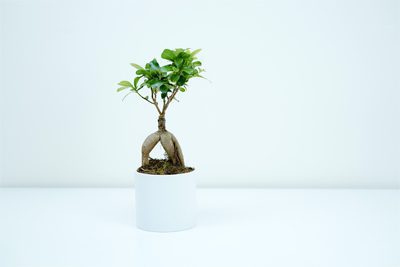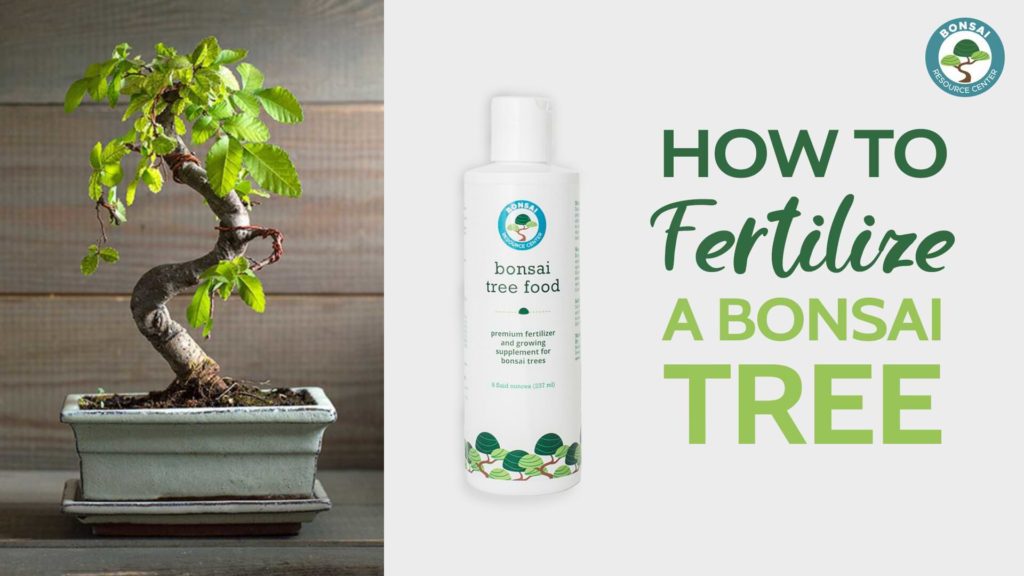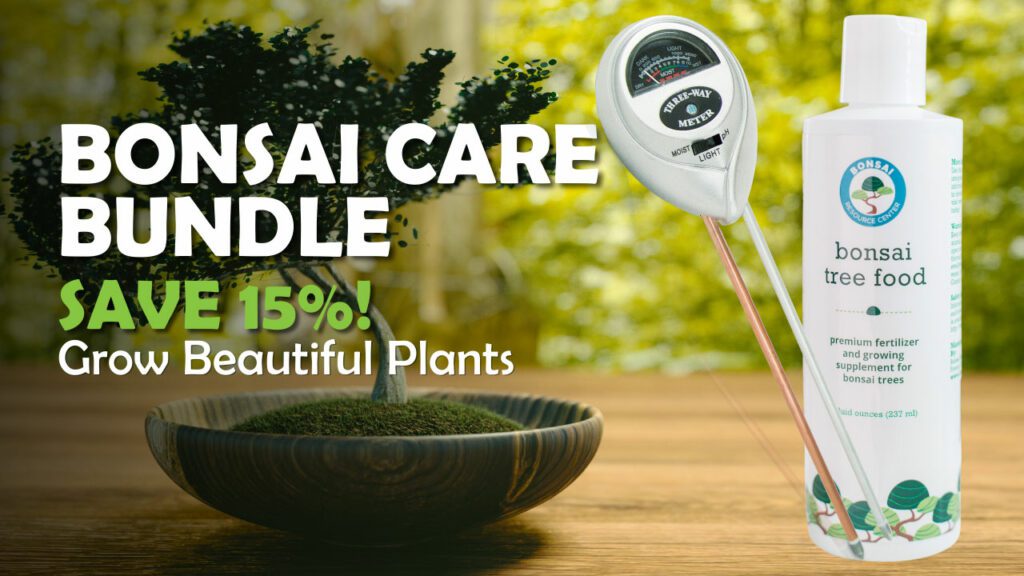Bonsai are living, growing pieces of art. Contrary to popular belief, bonsai are not their own species of tree, but are natural trees cultivated to grow at a small scale. While the word “bonsai” conjures images of gnarled trunks and tiny pink blossoms, it is possible to grow bonsai versions of anything from redwoods to willows. Each type requires slightly customized care, including a specialized bonsai tree fertilizer.

Although growing a healthy bonsai tree takes patience and precision, it’s not as daunting as it seems. Understanding a few basic components of bonsai tree fertilizer will ensure your tree grows healthy and strong.
This bonsai tree fertilizer beginner’s guide breaks down the most important things you need to know when caring for a bonsai.

Bonsai Trees and Fertilization
Plants absorb nutrients from soil to grow, depleting the soil over time. For cultivated plants, fertilization replaces the natural processes that replenish these nutrients in the wild. While fertilization is important for all plants, it’s particularly essential for delicate bonsai. Because they are planted in shallow containers, bonsai can easily deplete soil of the nutrients essential for growth.
The Big Three
Most commercial fertilizers contain three primary elements: nitrogen, phosphorus, and potassium. Each plays a fundamental role in plant growth:
- Nitrogen: Plants absorb more nitrogen than any other nutrient. This nutrient fuels new growth and is essential for plant health.
- Phosphorus: Plants need phosphorus to transfer and store energy. Phosphorus also aids in the process of photosynthesis.
- Potassium: This nutrient strengthens and fortifies plants, helping them resist disease and grow strong root systems.
Liquid vs. Solid Bonsai Tree Fertilizer
Bonsai tree fertilizer comes in two forms: liquid and solid. The best fertilizer for bonsai trees will contain the “big three” nutrients, though liquid and solid fertilizer each have their own benefits:
- Liquid fertilizer: Liquid concentrate is a fast-acting way to replenish nutrients. However, liquid fertilizer leaches from the soil with each watering, so it’s important to stick to a regular schedule when using liquid fertilizer.
- Solid fertilizer: Also known as granular fertilizer, solid fertilizer is spread on the surface layer of soil. This slow-release approach diffuses into the soil over time and requires less upkeep, but there is a much greater risk of burning your plant’s roots with solid fertilizers and it’s more difficult to know when to reapply your slow-release fertilizer.
Organic vs. Synthetic Bonsai Tree Fertilizer
Both organic and synthetic fertilizers will provide your bonsai the nutrients it needs to grow. Organic fertilizer is derived from natural sources like manure, fish, or seaweed. Synthetic fertilizers are chemically formulated.
While some people find natural, organic fertilizer appealing, others prefer the higher nutrient concentration in synthetic options. As long as you follow the product instructions, your tree will be happy either way.
Urea-Free Fertilizers
For growers who decide to use synthetic fertilizer, we recommend avoiding products that contain urea, a synthetic chemical widely used in fertilizers to replenish nitrogen. Because of its extremely high nitrogen levels, urea can be detrimental to delicate bonsai trees growing in limited soil.
Our Foolproof Gentle Liquid Fertilizer Method
One way to eliminate guesswork is to apply a gentle fertilizer every time you water your tree. We recommend adding a liquid 3-3-3 product to your watering can before each use.
This gives your tree a steady, slow infusion of nutrients (as opposed to sudden spikes and periods of starvation). It also helps prevent missed feedings and frees you from the hassle of developing a set schedule.
When Should I Fertilize My Bonsai Tree?
Regular feeding is important for a healthy bonsai tree, but the frequency will change with the season. Generally, trees should be fertilized from early spring to autumn, with some species requiring intermittent feedings during non-growing months.
Fertilization Schedule for Different Tree Types
- Tropical and subtropical: These trees should be fertilized weekly during the growing season. They will grow year-round and should be fed monthly from fall to spring.
- Deciduous bonsai: These trees should be fertilized weekly during the growing season. Once their leaves fall, fertilization should stop as the tree has gone dormant.
- Conifers: These trees should also be fertilized weekly during the growing season. During the winter months, reduce the feeding schedule to once or twice a month as they do not go fully dormant and will continue to use nutrients.
An easy way to balance feeding and watering schedules is to add a gentle 3-3-3 fertilizer to your watering can before each use. Since you will also adjust your watering schedule with the seasons, this ensures your tree receives a proper dose of nutrients year-round.
When shouldn’t I fertilize my bonsai?
Never fertilize a tree that’s under stress. A stressed tree is one that is sick, newly repotted, or in need of watering (always water your tree before feeding). If repotting, wait at least a month for your tree to re-establish before reintroducing fertilizer.
Can I overfeed my bonsai?
Yes! That’s why it’s important to understand the basic components of bonsai tree fertilizer. Over-fertilization can harm your tree’s roots and present visibly on other parts of your tree. Symptoms of overfeeding include:
- Yellowing or dying foliage
- A crusty layer of fertilizer on topsoil
- Slow growth or leaves that drop early
If you suspect you’ve overfed your bonsai, remove any visible fertilizer and flush your plant and roots with water. Trim any damaged foliage and wait at least a month to resume feeding.

Bonsai Tree Fertilization: A Beginner’s Checklist
- Step 1: Read the directions. First and foremost, always follow the instructions that accompany a new bonsai tree.
- Step 2: Choose your bonsai tree fertilizer type. Use the guide above to select an approach that works for you. We recommend a gentle liquid solution for use with every watering. Buy liquid urea-free fertilizer online.
- Step 3: Create a feeding schedule. Use the guide above to determine a schedule based on your tree type and growing season.
- Step 4: Monitor your plant. Keep an eye out for signs of over- or under-fertilization and note what your tree responds well to. Log your observations and modify as needed.
- Step 5: Be consistent! When you’ve found an approach your plant responds well to, be sure to stick to it.
Growing a happy, healthy bonsai doesn’t have to be difficult. Bonsai Resource Center offers a variety of resources to meet all of your bonsai needs.

Want to know more about the best fertilizer for bonsai trees? Leave your question in our Facebook group.
Join The Bonsai World
At The Bonsai Resource Center, our goal is to equip you with everything you need to grow and maintain a truly beautiful bonsai tree. This is our passion, and we want it to be yours as well! Whether you are a bonsai beginner or are looking to hone your skills, check out our other articles and visit our shop for all your bonsai needs!



